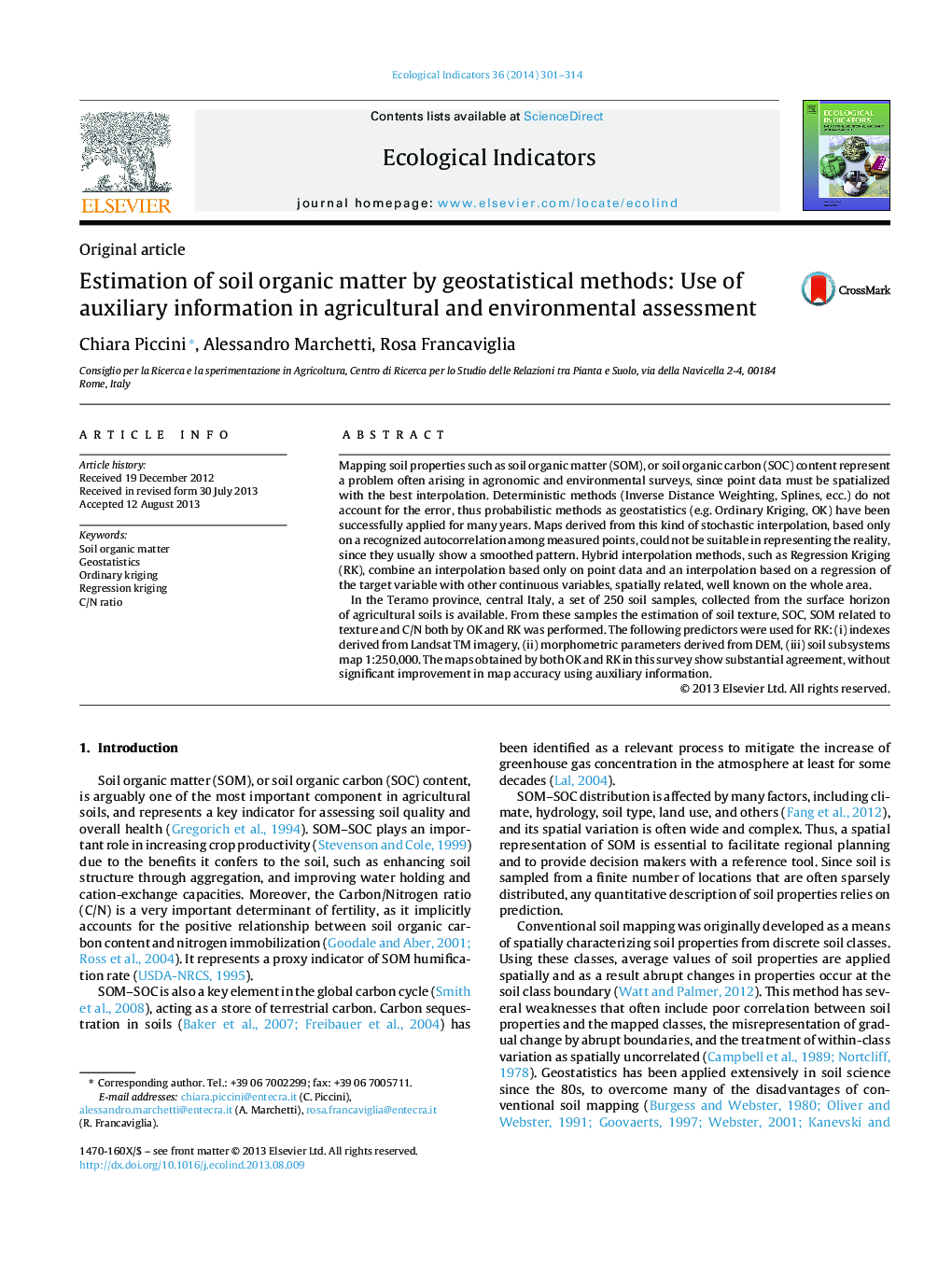| Article ID | Journal | Published Year | Pages | File Type |
|---|---|---|---|---|
| 4373322 | Ecological Indicators | 2014 | 14 Pages |
•Two different geostatistical methods, OK and RK, allowed to map soil characters.•Maps are used for agricultural and environmental assessment and for regional planning.•Maps estimated both by OK and RK showed similar accuracy for all the variables.•Spatializing soil variables provide decision makers with a useful reference tool.
Mapping soil properties such as soil organic matter (SOM), or soil organic carbon (SOC) content represent a problem often arising in agronomic and environmental surveys, since point data must be spatialized with the best interpolation. Deterministic methods (Inverse Distance Weighting, Splines, ecc.) do not account for the error, thus probabilistic methods as geostatistics (e.g. Ordinary Kriging, OK) have been successfully applied for many years. Maps derived from this kind of stochastic interpolation, based only on a recognized autocorrelation among measured points, could not be suitable in representing the reality, since they usually show a smoothed pattern. Hybrid interpolation methods, such as Regression Kriging (RK), combine an interpolation based only on point data and an interpolation based on a regression of the target variable with other continuous variables, spatially related, well known on the whole area.In the Teramo province, central Italy, a set of 250 soil samples, collected from the surface horizon of agricultural soils is available. From these samples the estimation of soil texture, SOC, SOM related to texture and C/N both by OK and RK was performed. The following predictors were used for RK: (i) indexes derived from Landsat TM imagery, (ii) morphometric parameters derived from DEM, (iii) soil subsystems map 1:250,000. The maps obtained by both OK and RK in this survey show substantial agreement, without significant improvement in map accuracy using auxiliary information.
